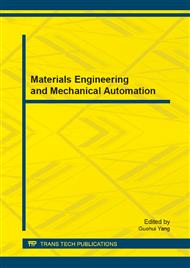p.276
p.282
p.287
p.291
p.298
p.304
p.311
p.315
p.321
A Robust Method of LED Die Recognition Based on Dual BP Neural Networks
Abstract:
A robust method based on dual back-propagation neural networks (BPNN) is proposed to recognize light-emitting diode (LED) dies on wafer planes in vision-based LED sorting system. To improve the recognition accuracy of LED dies, particularly under the condition of LED die image degradation, a dual BPNN with 3 layers architecture is first constructed, in which the two BPNNs are trained respectively using the region features and edge features of die images based on batch gradient descent method, and then the outputs of the dual BPNN are fused according to Dempster-Shafer (D-S) theory to generate a final decision. Applying the trained dual BPNN as a classifier, the recognition experiment of a large-diameter LED wafer is completed, experimental results show that LED die recognition accuracy of the dual BPNN is higher than that of the single BPNN based on the region feature or edge feature and is robust to die image degradation, it can be used for LED die array location in vision-baesd LED sorting machines.
Info:
Periodical:
Pages:
298-303
Citation:
Online since:
October 2013
Authors:
Keywords:
Price:
Сopyright:
© 2014 Trans Tech Publications Ltd. All Rights Reserved
Share:
Citation:


